Puerto Vallarta Time Zone of the beautiful coastal city in the Mexican state of Jalisco, attracts visitors from around the world for its pristine beaches, vibrant culture, and thriving tourism industry. One crucial aspect when planning a trip to this city is understanding its time zone and the current local time in order to maximize enjoyment and plan accordingly.

Located on the Pacific coast of Mexico, Puerto Vallarta lies within the Central Standard Time (CST) zone, which is UTC-6 hours. Knowing the local time may affect your decisions on planning activities, meetings, and travel times when visiting this popular destination. Puerto Vallarta, like much of Mexico, also observes daylight saving time, which starts during spring and ends in the fall.
Key Takeaways
- Puerto Vallarta is located in the Central Standard Time (CST) zone, UTC-6 hours.
- Daylight saving time is observed in Puerto Vallarta, affecting local time during spring and fall.
- Being aware of the local time and time zone helps visitors better plan their activities and travel in Puerto Vallarta.
Geographic Context and Time Zone
Position and Longitude
Puerto Vallarta is a popular tourist destination located in the state of Jalisco, Mexico. Its geographical coordinates are approximately 20° 37′ N latitude and 105° 13′ W longitude. Situated along the Pacific coast of Mexico, Puerto Vallarta enjoys a beautiful tropical climate and is a sought-after location for travelers.
Puerto Vallarta Time Zone
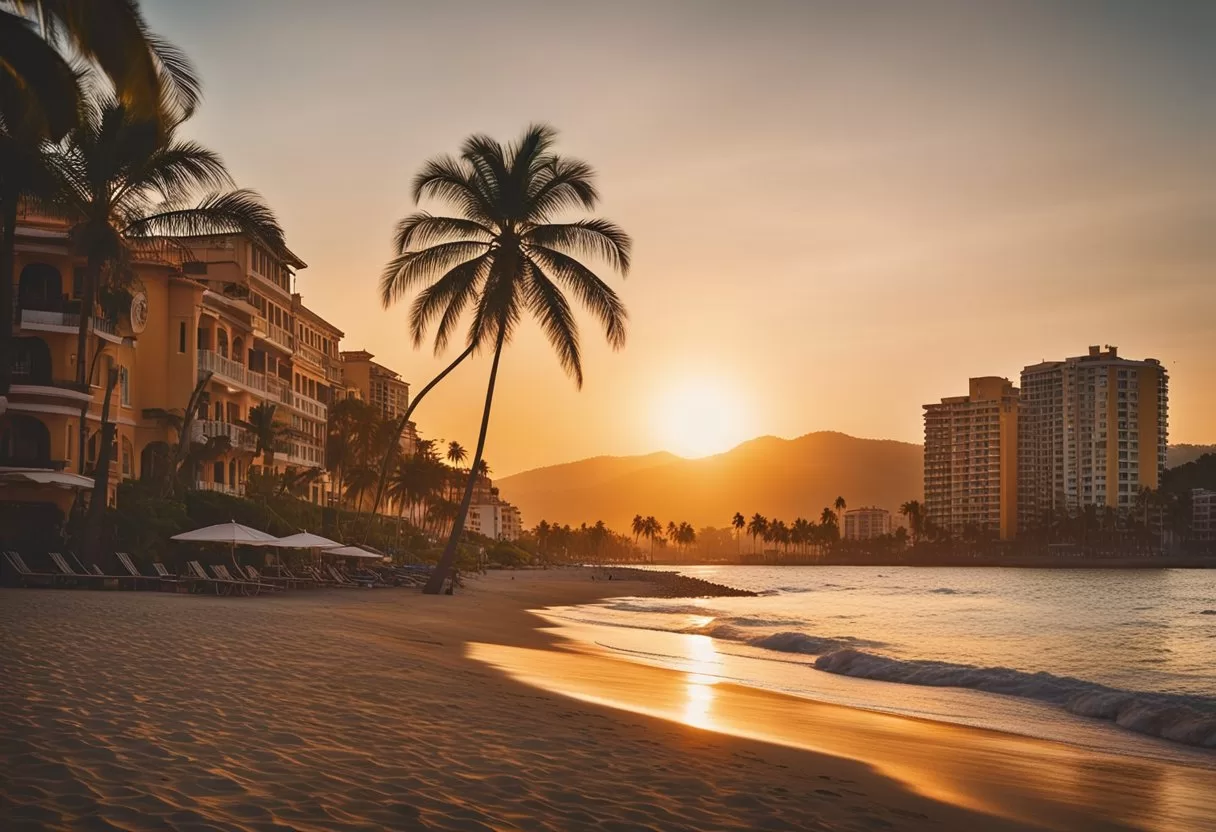
As part of the America/Mexico_City time zone, Puerto Vallarta operates under the Central Standard Time (CST), which is UTC-6. The city does not observe Daylight Saving Time, meaning that its local time remains consistent throughout the year. To better understand the time difference for travelers, Puerto Vallarta is 1 hour behind Roanoke Rapids, which follows Eastern Standard Time.
Here is a brief overview of the Puerto Vallarta time zones information:
- State: Jalisco
- Country: Mexico
- Latitude: 20° 37′ N
- Longitude: 105° 13′ W
- Time Zone: Central Standard Time (CST)
- UTC Offset: UTC-6
In summary, Puerto Vallarta is a beautiful city located in Jalisco, Mexico, with a latitude of 20° 37′ N and a longitude of 105° 13′ W. The city’s time zone is Central Standard Time (UTC-6), which remains consistent year-round as it does not observe Daylight Saving Time.
Current Local Time and Date
Today’s Date and Time
As of Sun, Feb 11, 2024, the local time in Puerto Vallarta, Jalisco, Mexico is within the Central Standard Time (CST) zone. CST is UTC/GMT -6 hours. It’s important to keep in mind that Puerto Vallarta does not observe Daylight Saving Time in 2024.
The general weather in Puerto Vallarta today is clear with a temperature of 55°F, and the predicted high and low temperatures are 84°F and 54°F, respectively.
Here is a brief overview of the dates and corresponding weekdays:
- Yesterday: Sat, Feb 10, 2024
- Today: Sun, Feb 11, 2024
- Tomorrow: Mon, Feb 12, 2024
- Day after Tomorrow: Tue, Feb 13, 2024
Weekday and Calendar Considerations
In Puerto Vallarta, weekends usually consist of Saturdays and Sundays, with most businesses closed on these days. Additionally, certain holidays can affect the regular function of businesses, so it’s important to check the local calendar for any special dates.
Here is a summary of the sunrise and sunset times during this period:
| Date | Weekday | Sunrise | Sunset |
|---|---|---|---|
| Feb 10 | Saturday | 7:35 am | 6:54 pm |
| Feb 11 | Sunday | 7:35 am | 6:54 pm |
| Feb 12 | Monday | 7:35 am | 6:54 pm |
| Feb 13 | Tuesday | 7:35 am | 6:54 pm |
The day length throughout this period is 11 hours and 18 minutes, with the sunrise occurring at 107° East and the sunset at 253° West. Keeping track of the local time, date, and calendar considerations is essential for travel planning and staying informed about daily activities in Puerto Vallarta.
Daylight Saving Time
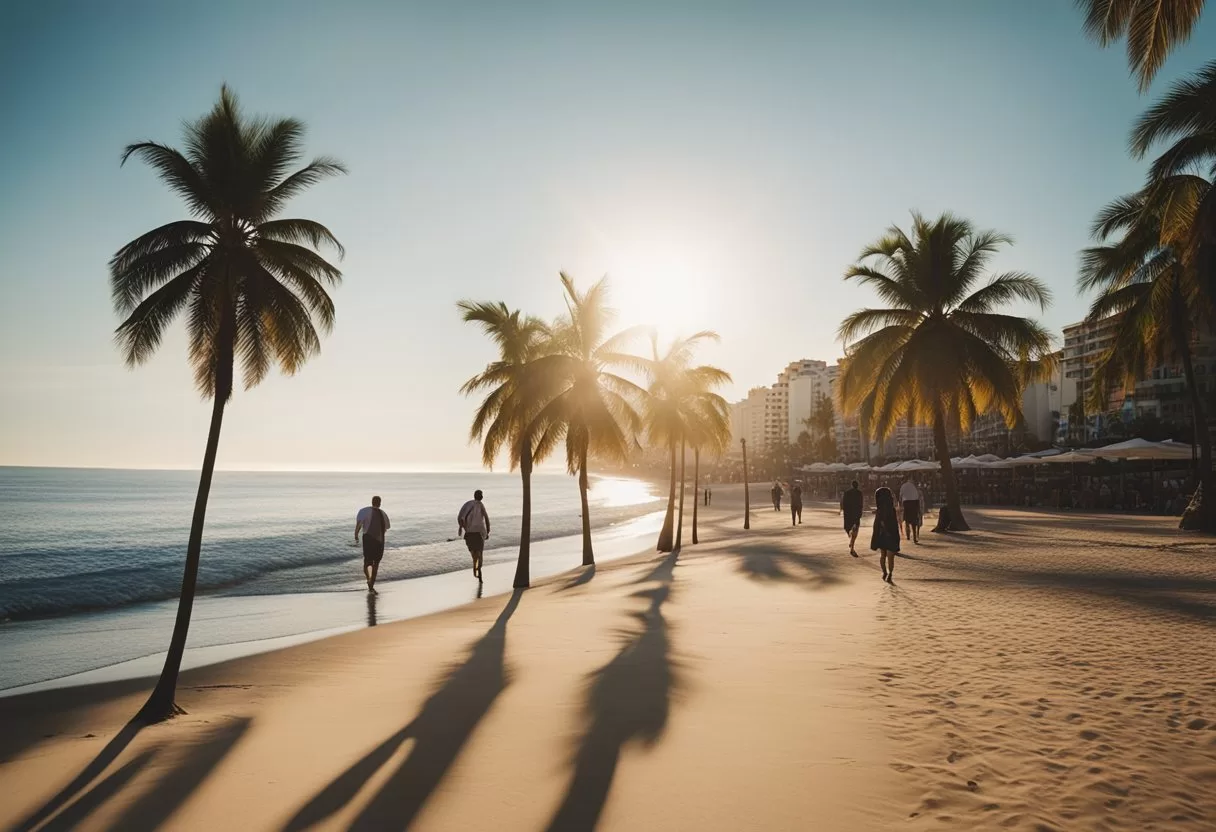
DST Changes in Puerto Vallarta
Puerto Vallarta, located in the state of Jalisco, Mexico, has experienced changes regarding Daylight Saving Time (DST) in the past. However, based on recent data, the practice of adjusting the clocks for DST is no longer in effect as of 2024.
In previous years, Puerto Vallarta residents would adjust their clocks during the DST period – turning them forward an hour in the spring (“spring forward”) and then back an hour in the fall (“fall back”). This practice aimed to extend the daylight hours during the warmer months and conserve energy by reducing the need for artificial lighting in the evenings.
For example, in 2021, local standard time was set to advance by an hour on Sunday, April 4, when clocks were turned forward from 2:00:00 am to 3:00:00 am. However, more recent information indicates that there are no further time changes planned for 2024 in Puerto Vallarta.
Regarding the current local time, as of Wednesday, February 7, 2024, the time in Puerto Vallarta is 6:47:34 PM (CST) and follows the Central Standard Time (CST) all year round.
In summary, Puerto Vallarta no longer observes DST and maintains a consistent local time throughout the year. The practice of “spring forward” and “fall back” is no longer applicable in the city, simplifying timekeeping for residents and visitors alike.
Sunrise and Sunset Times
Daily Solar Events
In Puerto Vallarta, knowing the sunrise and sunset times can enhance your experience in this beautiful city. Being aware of these solar events helps visitors plan their days and take in the breathtaking views the city offers.
Sunrise in Puerto Vallarta occurs around 7:35 am, while sunset takes place around 6:53 pm during February 2024. The city enjoys a day length of roughly 11 hours and 17 minutes, leaving plenty of daylight for exploring and enjoying the surroundings.
During these solar events, the sun’s highest point, or maximum elevation, can reach +50°33’18”. This occurs at the zenith, which is approximately 1:14 pm on any given day.
Below is a brief summary of the key solar events in Puerto Vallarta for February 2024:
- Sunrise: 7:35 am
- Sunset: 6:53 pm
- Day Length: 11 hours, 17 minutes
- Maximum Elevation: +50°33’18”
Being familiar with these solar events allows visitors to optimize their time in Puerto Vallarta, planning their days around the vibrant sunrises, striking sunsets, and abundant sunshine.
Weather and Climate
Weather Patterns
Puerto Vallarta’s climate can be described as tropical, with hot temperatures present throughout the year. There are two distinct periods in Puerto Vallarta’s weather patterns: a drier, less hot period from December to April, and a muggy, rainy period from June to October.
During the dry season (December to April), the weather in Puerto Vallarta is usually warm and comfortable. Average temperatures during this time range from the low 70s to mid 80s °F. This period is characterized by mostly sunny days and cooler evenings, making it an ideal time for outdoor activities and sightseeing.
In contrast, the rainy season (June to October) brings increased humidity and rainfall, with temperatures between the mid-70s to high 80s °F. It may not always be partly sunny during this time, but visitors can still expect a significant amount of sunshine even during the wettest months.
The city’s coastal location at 20 degrees north latitude in the state of Jalisco also influences its weather. Occasional cool and windy periods may be experienced, although these are not very common.
In summary, Puerto Vallarta’s tropical climate offers warm weather throughout the year, with a drier and milder period from December to April, followed by a rainy and muggy season from June to October.
Cultural and Demographic Information
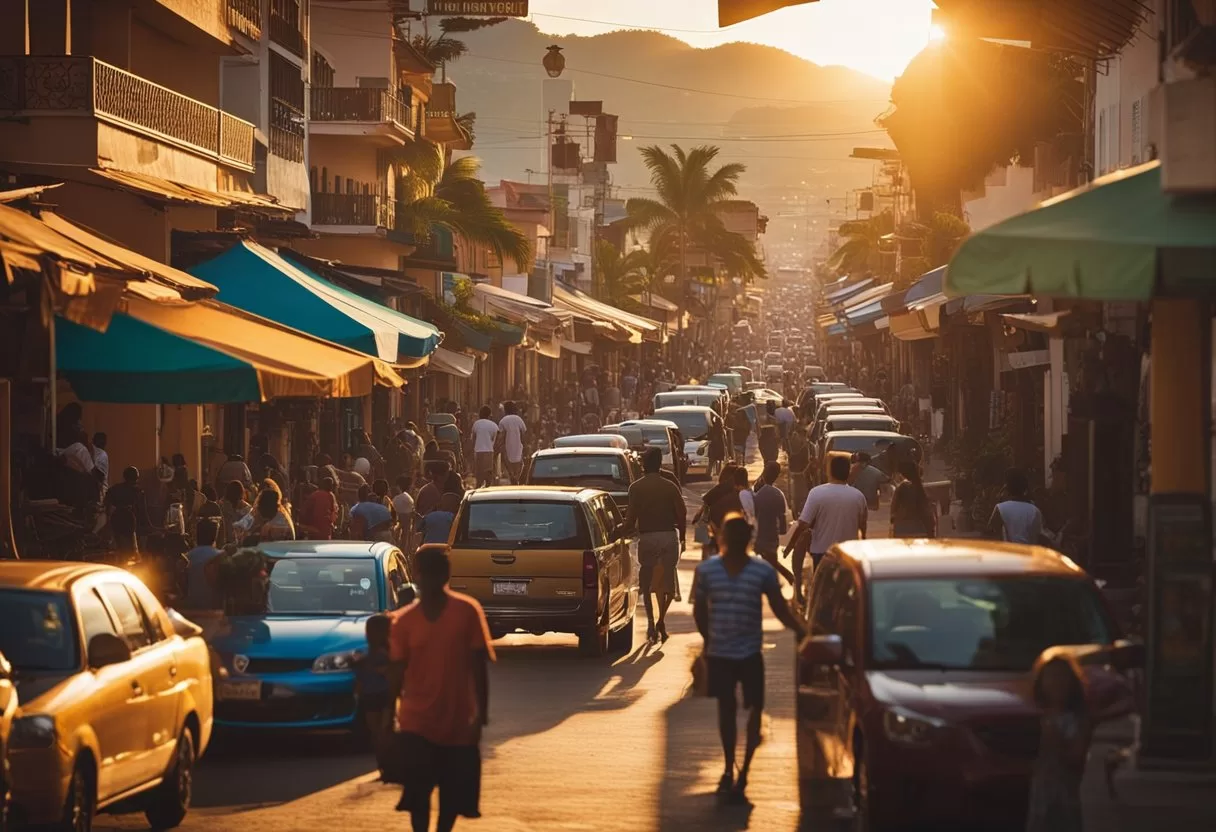
Languages Spoken
Puerto Vallarta is a diverse and culturally rich city, with a majority of the population primarily speaking Spanish. However, it’s not uncommon for residents to speak a variety of indigenous languages, such as Nahuatl and Yucatec Maya. Thanks to its status as a popular tourist destination, English is also widely spoken in the area.
Population Insights
Puerto Vallarta has experienced significant population growth in recent years. According to data from 2020, the city’s population was approximately 291,839 inhabitants, with a nearly equal gender distribution of 50.1% men and 49.9% women. This number shows a 14.1% increase in population compared to 2010. Current estimates place the 2024 population at 567,694 residents, representing a 2.09% annual change.
When considering the average travel time for people in the city, 97.1% of the population takes less than an hour to commute from home to their place of study, with an average travel time of 16.9 minutes. Similarly, 85.9% of the population takes less than an hour to commute to work, with an average travel time of 28.6 minutes.
In conclusion, Puerto Vallarta is a vibrant and growing city, with a diverse linguistic and cultural landscape that continues to develop over time.
Economic Aspects
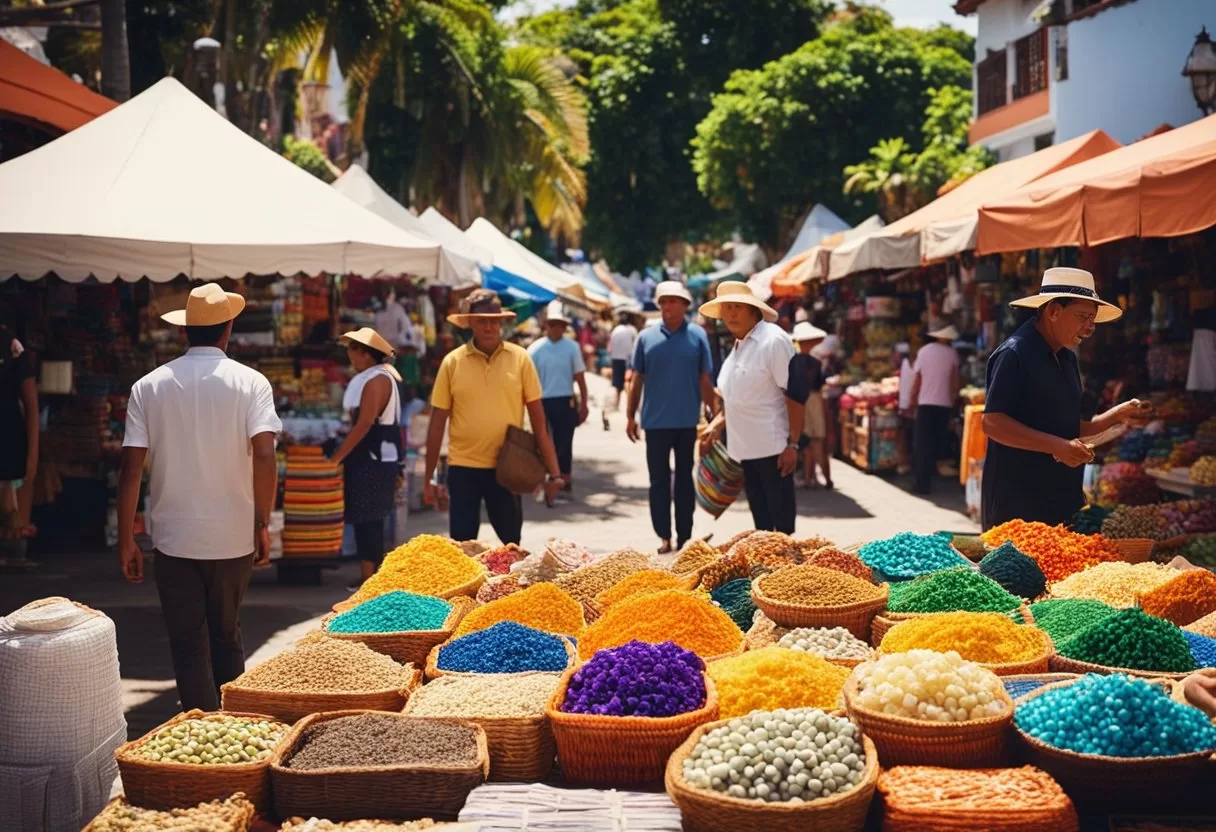
Puerto Vallarta, a popular tourist destination in Mexico, plays a crucial role in the local economy. The city’s economic activities are primarily driven by tourism, which accounts for approximately 50% of the total economic activity in Puerto Vallarta. In the first half of the year alone, Puerto Vallarta generated an economic benefit of 22 billion pesos, welcoming around three million visitors.
Currency and Exchange
The currency used in Puerto Vallarta, as with the rest of Mexico, is the Mexican Peso (MXN). Visitors coming from abroad will need to exchange their local currency to MXN to carry out transactions. Currency can be exchanged at banks, hotels, and authorized exchange bureaus known as “Casa de Cambio”. For international calls, the country code for Mexico is +52, which is necessary when dialing from other countries.
Here are some key aspects to remember regarding currency exchange and transactions in Puerto Vallarta:
- Banks and ATMs offer better exchange rates compared to other locations.
- Major credit cards are widely accepted at hotels, restaurants, and stores.
- U.S. dollars might be accepted in popular tourist areas, but using the local currency is advised for better exchange rates.
| Currency | Symbol | Country Code |
|---|---|---|
| Mexican Peso | MXN | +52 |
In conclusion, Puerto Vallarta’s economy is heavily reliant on tourism, with the Mexican Peso being the primary currency. When visiting, it is essential to be aware of the currency conversions, exchanges, and best practices for carrying out transactions.
Global Time Comparisons
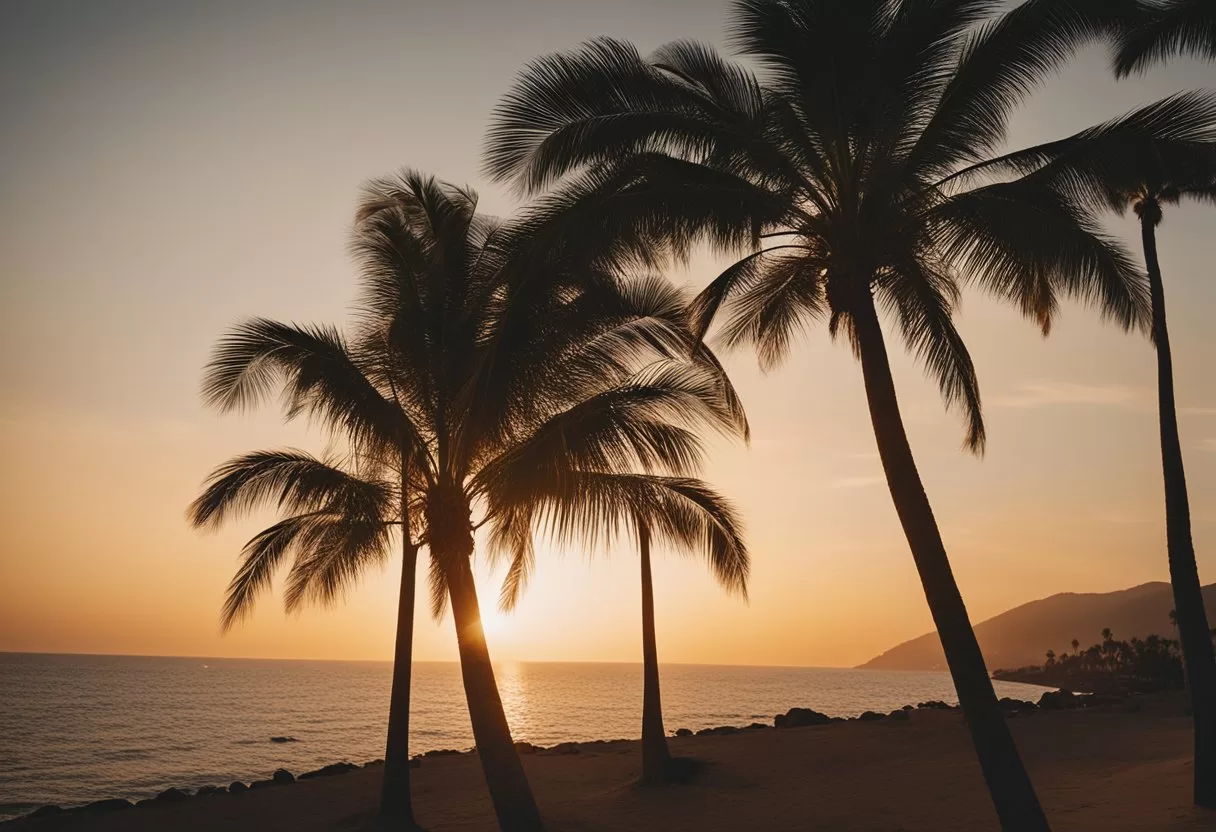
Time Differences with Major Countries
Puerto Vallarta, located in the Mexican state of Jalisco, follows the Central Standard Time (CST) and is UTC-6 hours. In comparison to other major countries, Puerto Vallarta has different time differences, depending on the respective time zones.
For instance, China has only one time zone, which is China Standard Time (CST) and is UTC+8 hours. This means that when it is Noon in Puerto Vallarta, it is already 2:00 AM the next day in China.
In the case of Canada, the time difference varies across the country as Canada spans six time zones. The difference ranges between 2 to 4 hours ahead of Puerto Vallarta, depending on the specific region within Canada.
When comparing Puerto Vallarta’s time to Brazil, it should be noted that Brazil has four time zones. The time difference between Puerto Vallarta and Brazil ranges from 2 hours ahead to 2 hours behind, based on the respective Brazilian time zone.
Russia is known for its vastness and has eleven time zones across the country. The time difference between Puerto Vallarta and Russia can be as little as 8 hours ahead, going up to 16 hours ahead, depending on the specific region within Russia.
Here is a brief overview of the time differences between Puerto Vallarta and the major countries mentioned:
| Country | Time Zone(s) | Time Difference with Puerto Vallarta (Hours) |
|---|---|---|
| China | UTC+8 | +14 |
| Canada | UTC-3.5 to UTC-8 | -2 to -4 |
| Brazil | UTC-2 to UTC-5 | +2 to -2 |
| Russia | UTC+2 to UTC+12 | +8 to +16 |
Keep in mind that the time differences mentioned above may change slightly during Daylight Saving Time adjustments. It is always recommended to double-check the time differences to ensure accuracy when coordinating across different time zones.
Maps and Navigation
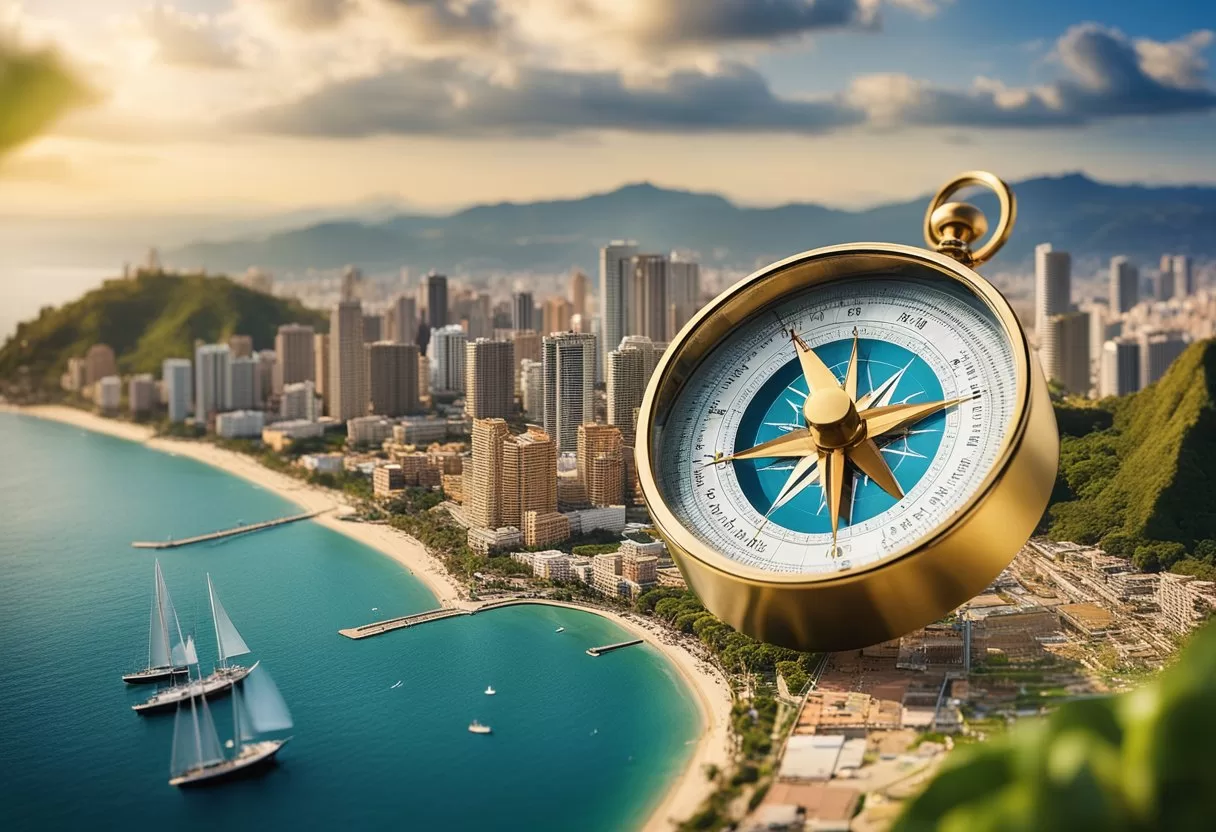
Using Maps to Determine Local Time
In Puerto Vallarta, Mexico, understanding the local time is important for planning activities and coordinating events. One useful method to figure out the local time is by using maps with latitudes and longitudes. The coordinates of Puerto Vallarta are 20.62° latitude and -105.23° longitude.
The timezone in Puerto Vallarta is Central Standard Time (CST), which is UTC/GMT -6 hours. Based on this, you can calculate the local time in Puerto Vallarta relative to other time zones.
For example, here is a simple comparison table for Puerto Vallarta and a few selected cities:
| City | Time Zone | Difference from Puerto Vallarta |
|---|---|---|
| New York | EST (UTC-5) | +1 hour |
| London | GMT (UTC+0) | +6 hours |
| Tokyo | JST (UTC+9) | +15 hours |
Note that in 2024, Puerto Vallarta does not observe Daylight Saving Time (DST), which means that the time difference will remain the same throughout the year.
When using maps for navigation in Puerto Vallarta, it is crucial to understand that finding your way around will be easier if you are familiar with the local time, as it can impact business hours, transportation schedules, and more. By mastering the time differences and utilizing online tools (such as the provided search results), you can confidently navigate your trip and make the most out of your journey to this beautiful Mexican destination.
Frequently Asked Questions – Puerto Vallarta time
What is the time zone for Puerto Vallarta?
Puerto Vallarta is located in the Central Time Zone (CT), which is the same as Dallas and Chicago. The local time in Puerto Vallarta is 6 hours behind Coordinated Universal Time (UTC-6).
Do clocks in Puerto Vallarta adjust for daylight saving time?
No, Puerto Vallarta does not observe daylight saving time in 2024. The clocks remain constant throughout the year, making it easier for visitors to plan their trips without worrying about any time changes.
What is the hottest month of the year in Puerto Vallarta?
The hottest month of the year in Puerto Vallarta is typically August, with temperatures reaching as high as 84°F (29°C). It’s important for travelers to stay hydrated and take precautions to avoid heat-related illnesses during this time.
How does Puerto Vallarta’s weather vary throughout the year?
Puerto Vallarta experiences a tropical climate, with warm temperatures and high humidity throughout the year. The best time to visit Puerto Vallarta is between December and March when the weather is cooler and dryer. This period is also ideal for enjoying water sports and spending time at the beach.
Can you find Puerto Vallarta in the Central Standard Time zone?
Yes, Puerto Vallarta is located in the Central Standard Time (CST) zone, the same timezone as cities like Dallas and Chicago. The local time in Puerto Vallarta is 6 hours behind Coordinated Universal Time (UTC-6).
What are some top activities to do when visiting Puerto Vallarta?
Puerto Vallarta is a popular tourist destination known for its stunning beaches, vibrant culture, and warm hospitality. Some top activities to enjoy when visiting Puerto Vallarta include exploring the historic downtown area, visiting the iconic Church of Our Lady of Guadalupe, sunbathing on the beautiful beaches, and taking part in various water sports such as snorkeling, scuba diving, and whale watching (particularly between December and March, when humpback whales can be seen in Banderas Bay).





